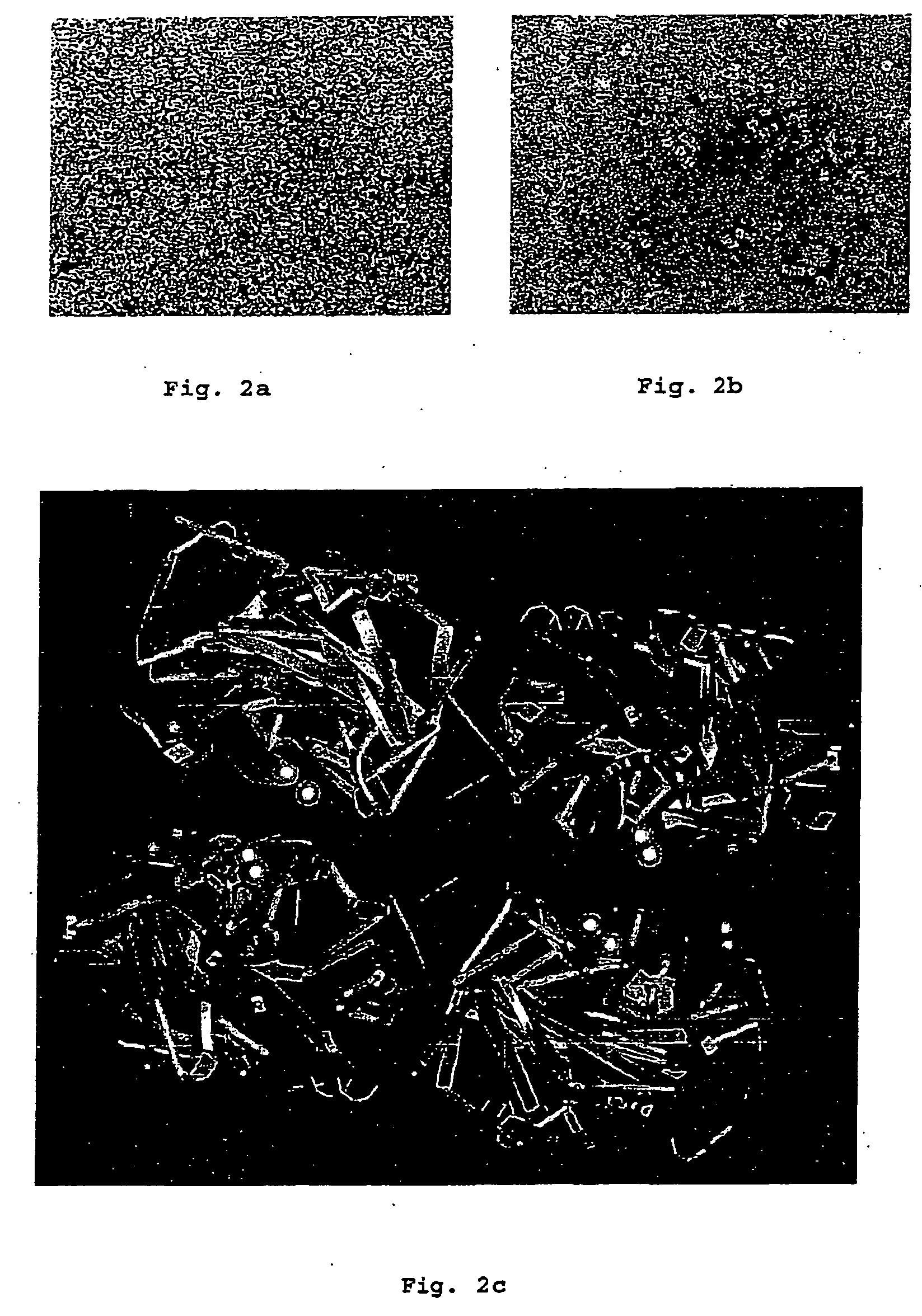[0006] Surprisingly, it has been found that agents according to the present invention are potent in inhibiting ligand binding to CRP. It has been shown that CRP plays a direct pathogenetic role in a
disease condition, specifically by enhancing the extent of myocardial damage produced by ischaemic injury. This pathogenetic role can be treated or prevented by the use of a
drug capable of inhibiting the binding of CRP to its target ligand
in vivo. Without wishing to be bound by theory and as described in further detail herein, it is thought that the inhibition of binding of CRP to its target ligand
in vivo would prevent CRP from activating complement and thereby reduce or eliminate the deleterious effects of CRP mediated complement activation now thought responsible for
tissue damage in the conditions to be treated according to the present invention.
[0013] According to the present invention, drugs that either inhibit the binding of CRP to its ligands in vivo, and / or that reduce its availability for such binding in vivo, will block the contribution of CRP to
pathogenesis of
disease and will thereby reduce extent and severity of disease, reducing symptoms and prolonging survival. The present invention provides compounds with such effects, for the preparation of a composition for the prevention and / or treatment of atherosclerosis and its complications, including
myocardial infarction,
stroke and
peripheral vascular disease, acute and chronic inflammatory diseases of known and unknown aetiology, acute and chronic infections of all types, traumatic injuries including burns, acute and elective
surgery, malignant neoplasia of all types, and all disease conditions associated with increased CRP production.
[0014] In the agents of the present invention, although the ligands may be directly linked together by a
covalent bond, the ligands are preferably covalently co-linked by a
linker. This enables the ligands to be sufficiently spatially separated whereby a plurality of target proteins may be bound to the agent without one protein hindering the binding of the other protein or proteins. The exact structure of the
linker is not critical although it is typically preferred not to include reactive groups. The
linker may comprise a linear or branched hydrocarbylene which may have one or more of its carbon atoms optionally substituted by a
heteroatom. The linker may have a
chain length in the range 2 to 20 atoms although a preferred range is 5 to 7 atoms. Useful
chain length and
chemical composition may be determined empirically depending on the proteins with which the agent is to be complexed. Where the agent has two ligands, the linker is typically linear; a preferred general structure is ligand-linker-ligand. This is conveniently denoted a “
palindrome” for the purposes of the present application. The linker may comprise one or more double bonds, as discussed in further detail below. Where the linker comprises at least two double bonds these may be conjugated and are preferably trans to one another. Alternatively, the linker comprises one or more
arylene groups, for example as —Ar—Ar—
moiety. The
arylene groups may be heteroarylene groups. Preferably, the
arylene groups are
[0019] The present invention is therefore concerned with a method for selecting a pharmaceutical compound which includes testing for CRP ligand binding in the presence of a test compound. Any test compound which inhibits binding of CRP to the test ligand is selected as a potential pharmaceutical. For example, the test compound may be selected in the sense that it is identified and can then be produced on a larger scale by chemical or biochemical synthesis or may be physically selected for direct formulation as a pharmaceutical. In accordance with the process for production of the pharmaceutical agent, the test compound may be formulated for pharmaceutical use or may be derivatised or chemically modified to produce a pharmaceutically-acceptable derivative thereof. Such derivatisation may simply be required to incorporate new functional groups or alter existing functional groups to make the agent easier to formulate, for example by altering the
solubility of the compound. Derivatisation of this nature may be used to decrease the
toxicity of the compound, to alter the stability of the compound or even to modify the pharmacological activity thereof. Any such derivatised or modified compound may need to be retested according to the method of the present invention. This process can equally be applied to the agent of the present invention in order to improve its pharmaceutical properties.
 Login to View More
Login to View More 


